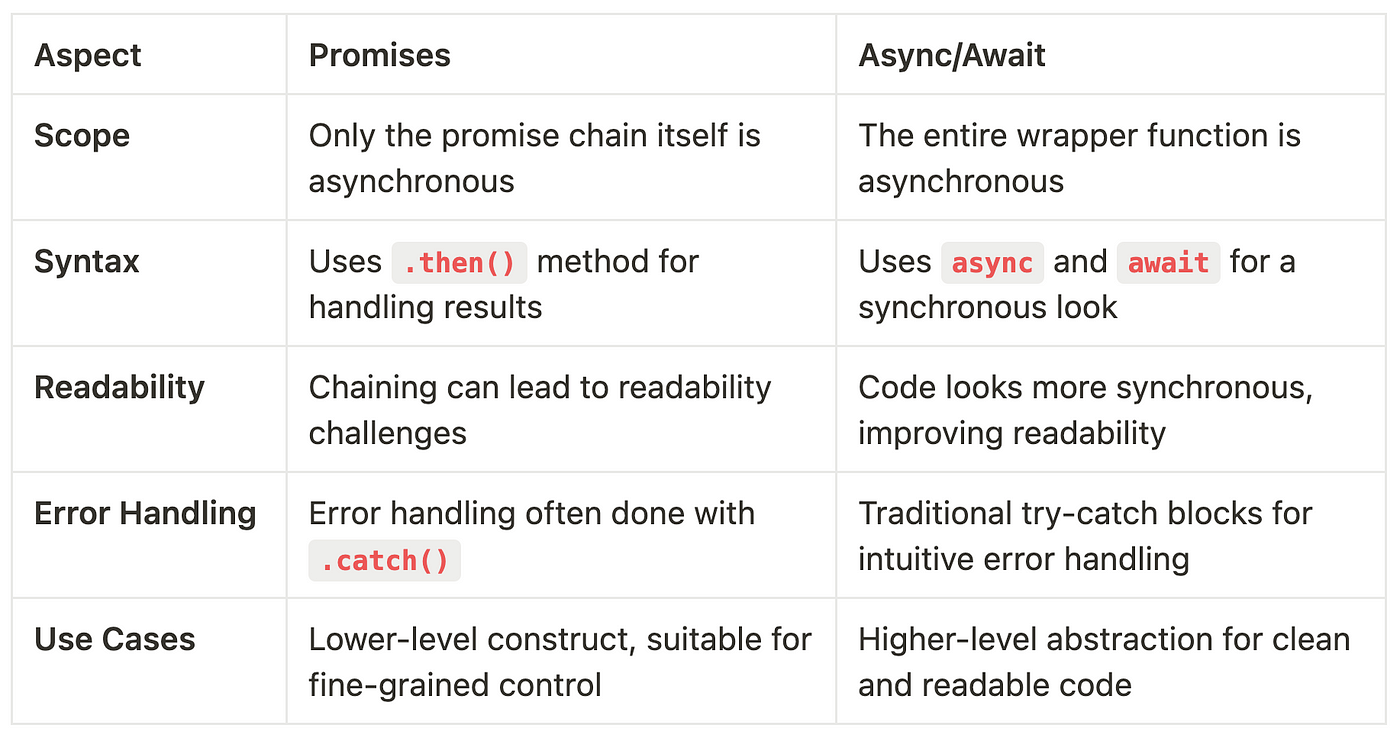Intermediate JavaScript
Advanced Promises and Async/Await
Handling asynchrony in JavaScript is fundamental for working with operations that take time to complete, such as API requests or file processing.
In this chapter, we will explore advanced techniques for handling Promises and the use of async and await.
 cuadro comparativo entre promesas y async/await
cuadro comparativo entre promesas y async/await
Advanced handling of Promises and the use of async/await in JavaScript allow you to work with asynchrony in a clear and efficient way.
With techniques like Promise.all and Promise.race, you can execute multiple asynchronous operations and manage response times effectively.
Support Chuck’s Academy!
Enjoying this course? I put a lot of effort into making programming education free and accessible. If you found this helpful, consider buying me a coffee to support future lessons. Every contribution helps keep this academy running! ☕🚀

Chat with Chuck

- Advanced Destructuring and Spread Operator
- Advanced Array Manipulation
- Functions and Closures in JavaScript
- Functional Programming in JavaScript
- Advanced DOM Handling
- Scope, Context, and `this` in Depth
- Advanced Promises and Async/Await
- Error Handling in JavaScript
- Modules in JavaScript
- Prototype Manipulation and Inheritance
- Classes and Object-Oriented Programming in Depth
- Design Patterns in JavaScript
- Asincronía Avanzada y Web APIs
- Reactive Programming with RxJS
- Expresiones Regulares Avanzadas en JavaScript
- Optimización del Rendimiento en JavaScript
- Introduction to WebAssembly
- Advanced Testing with Mocha, Chai, and Jest
- Advanced Debugging and Development Tools
- Best Practices and Code Styles
- Conclusions and Next Steps













